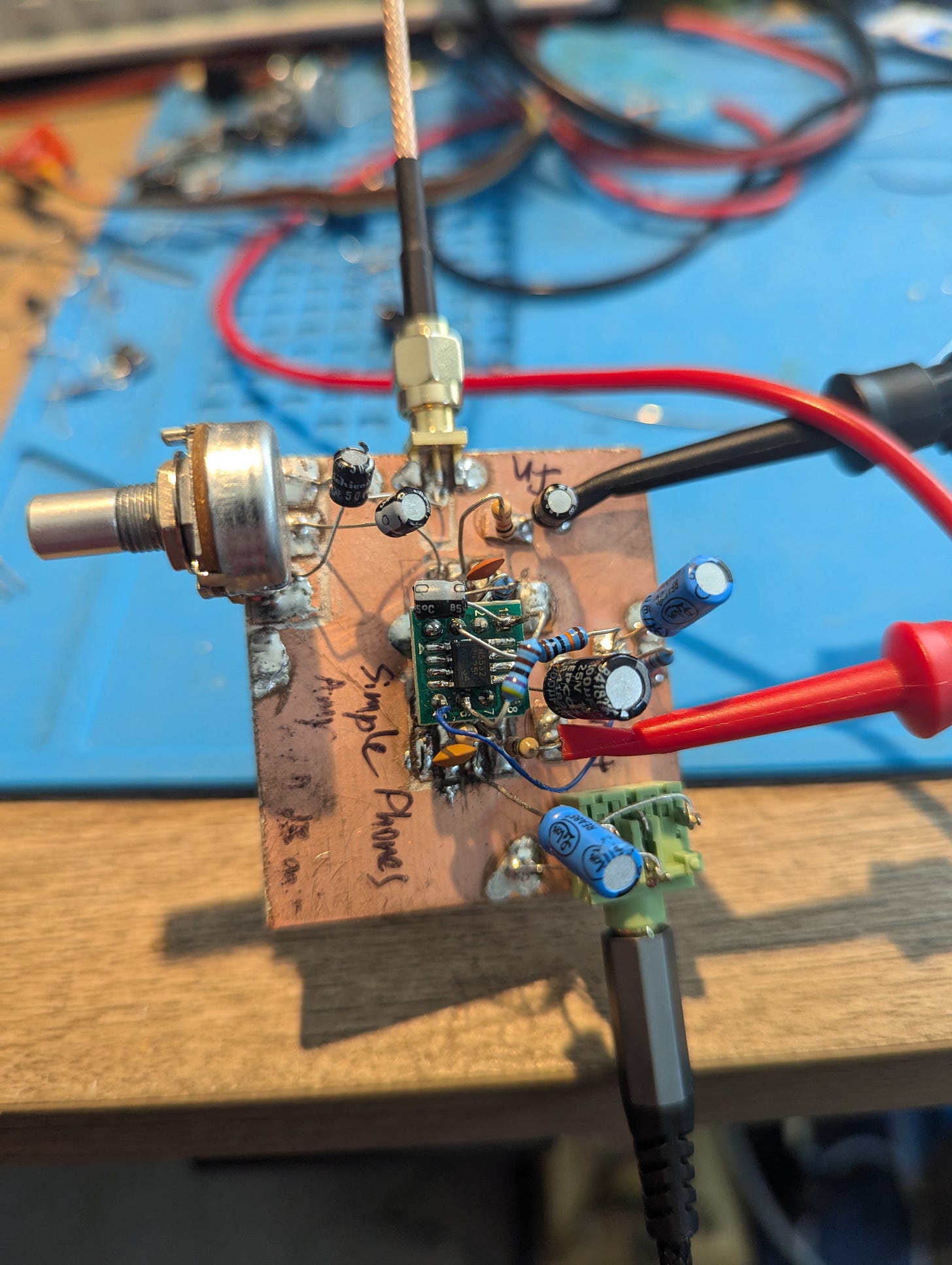As Project Yamhill nears actual physical implementation, it’s time to start building some more real-time, two-way communication. We’re starting to get some beta testing and discussions going! If you’d like to participate in Project Yamhill chat, please click on the link below. Thank you!
There hasn’t been as much progress on Etherkit stuff since the last update as I was hoping, since I’ve been in a bit of mad dash to get work done on the outdoor projects around the property that need to be done before the rainy season begins in earnest here in about a month. However, I’ve still be chipping away on different circuits when I have the time and certainly have a few new things to share with you.
Transceiver Developments
I haven’t come right out and said this publicly yet, but I’ve always intended for Project Yamhill and the other side projects that I’m working on to all work together as a part of an internal Etherkit “ecosystem” so that I can get some viable transceivers to market as one of my near-term goals. Now that I’m well down the development path of these side projects, I can start devoting more of my development efforts into the actual designs of these rigs that I’m envisioning. That’s one of the big reasons why I started looking into the MAX268x mixer ICs. I wanted to find a modern replacement for the SA612 that could perform a similar function. What’s particularly nice about this family of parts is that you can choose the MAX2680 for the best current consumption and worst IP3, the MAX2681 for middling values of both of those parameters, or the MAX2682 for the best IP3 at the cost of more current consumption. This would allow for the potential of a better-performing front-end than your typical SA612 rig.
What I’ve had in mind are two different rigs: a Rockmite-class direct-conversion transceiver that is rock-bound with about 1 watt or so of transmit power, and a more full-featured superhet CW transceiver that’s multiband (Si5351A LO, natch) and has a lot more bells and whistles. With that context, here’s the latest progress in the drive to bring all of these disparate things together into some new transceivers.
As I mentioned in a previous update, one of the circuits that I’ve been perfecting is a simple audio amplifier chain for headphones that utilizes a single NE5532 op-amp. The circuit that I featured previously was a little anemic with its ~65 dB of gain (when paired with the ~15 dB of conversion gain of the MAX2681 is usable, but not ideal). Pushing the gain of an op-amp stage too much tends to introduce a lot of noise, so I wanted to find the balance between enough gain to hear well without getting too much extra noise.
Fortunately, by tweaking the feedback resistors and caps a bit, I was able to get the gain up to around 80 dB with it still sounding pretty good. I also added a JFET mute circuit, since the intention is to integrate this into a transceiver in the near future. By working on balancing the gain with the least amount of added noise, I also wanted to confirm that any excessive noise that I was hearing in previous iterations of this receiver were due to poor audio amplifier design on my part, and not noise introduced by the MAX2681 mixer. After these latest revisions, I think I can safely say that the mixer is not any noisier than a SA612, and the whole direct conversion receiver made from these two blocks sound quite nice together. Here’s a recording of a 40 meter band scan that I made a few nights ago during what I believe was the North American CW Sprint. Please excuse the overload in a few sections of the audio. There is no AGC in this receiver and my poor Zoom recorder couldn’t hack the signal levels of some of those booming CW signals.
Gotta love that crisp direct conversion sound! I’m encouraged to continue on with the simple rock-bound transceiver design. Getting EtherKeyer Mini beta tested will also help with this project, as most of that code will be going into this new radio too.
Now that I know for sure I can use the MAX268x as a clean product detector, I’m confident I can work on the IF of the more general purpose CW rig that I mentioned above. In that vein, I dug out a reel of 4.032 MHz crystals that I’ve had laying around for just such a purpose and measured the parameters of one with my trusty NanoVNA with DISlord firmware (makes this measurement ridiculously easy) and then plugged those numbers into the DISHAL crystal filter design program so that I could get a design for a 400 Hz IF filter to stick between two MAX2681 mixers.
After building the design that was generated, along with some L-matches to transform the 1200 Ω end Z to 50 Ω for the spectrum analyzer, I was able to confirm that the response looks about how it should and the filter isn’t too lossy. I’m pretty sure that I can make the filter work at the ~4 MHz frequency without any matching on either the output of the front end mixer (expect maybe for changing the output resistor) and also the input of the product detector mixer. I’m looking forward to getting this all together in the near future to see how it turns out.
What’s Next
I’m also working on a better AF amp stage for the yet-unnamed big brother CW QRP transceiver. I’m still ironing out some kinks in that, but once that is in working condition then I’ll be able to put together a prototype of this transceiver’s receiver section, and then also backport the audio chain back to Project Yamhill, where I’ve run into some stupid problems there. That should allow me to make what is hopefully an actually usable Front Panel PCB for Project Yamhill, which everything else is hinging on right now. Thanks again for your patronage and support!






So a neighborhood level network kind of like a mesh net? Would it be packet based? Do you you imagine it having document and media servers and a way to livestream at least audio?